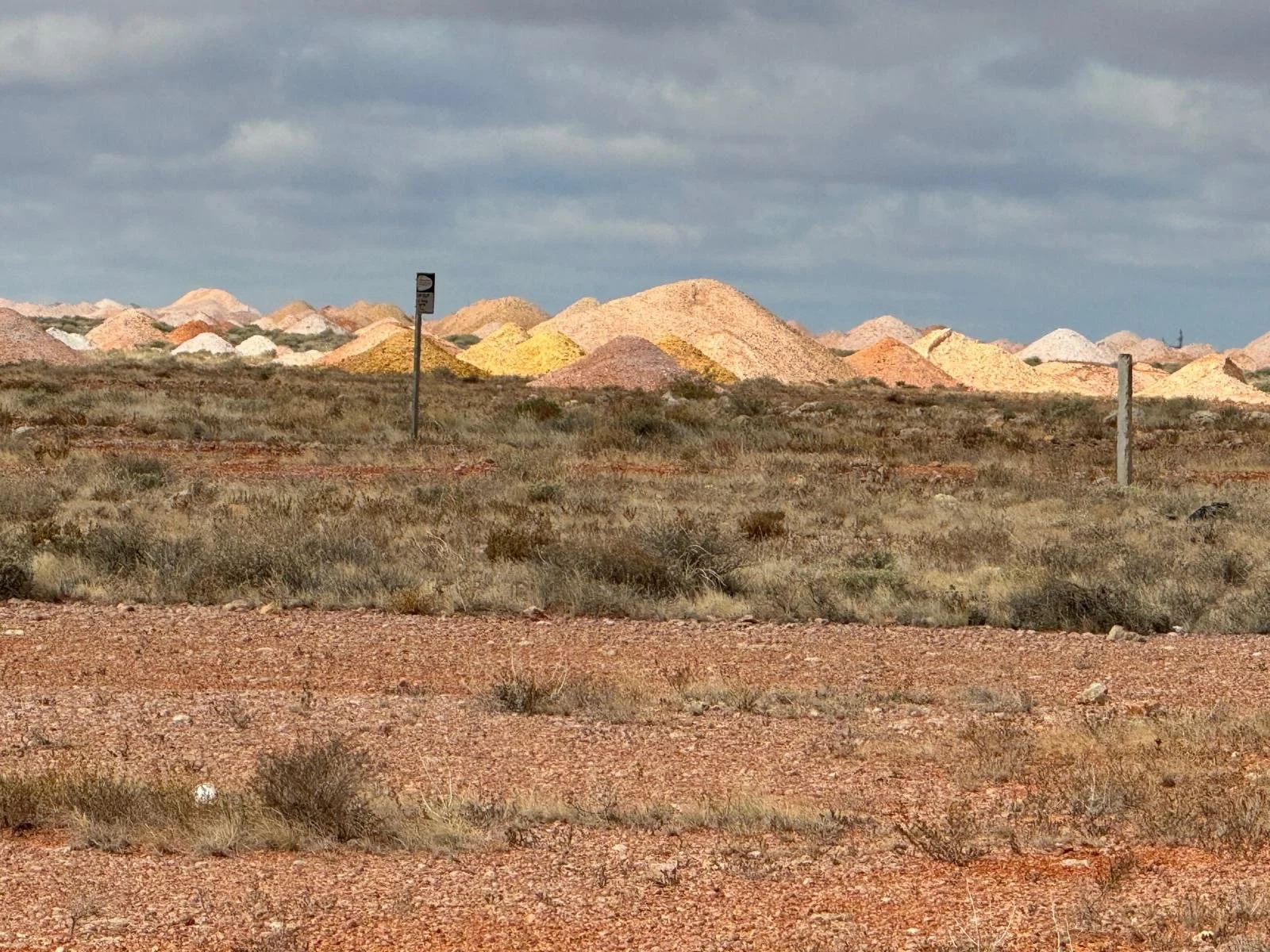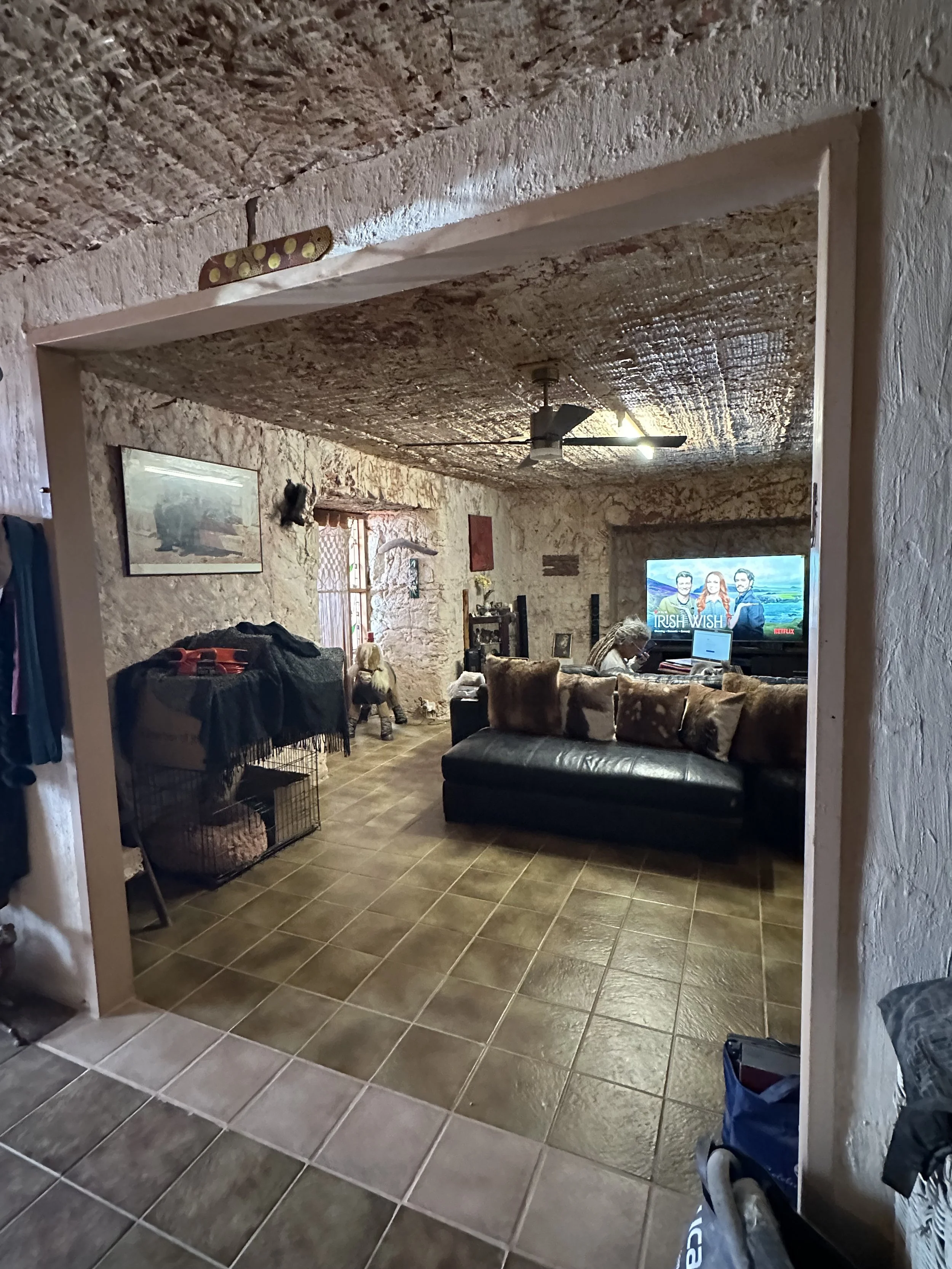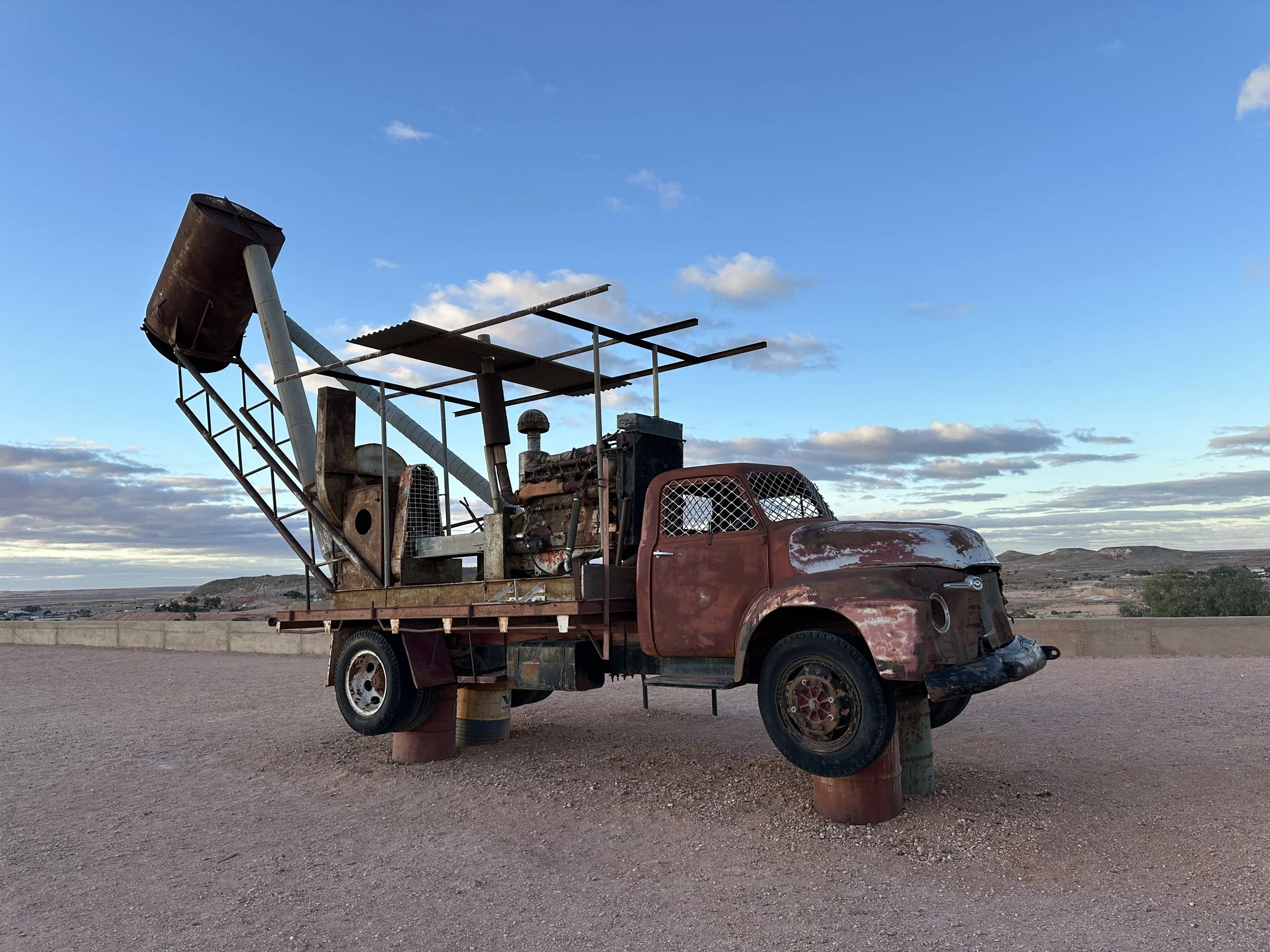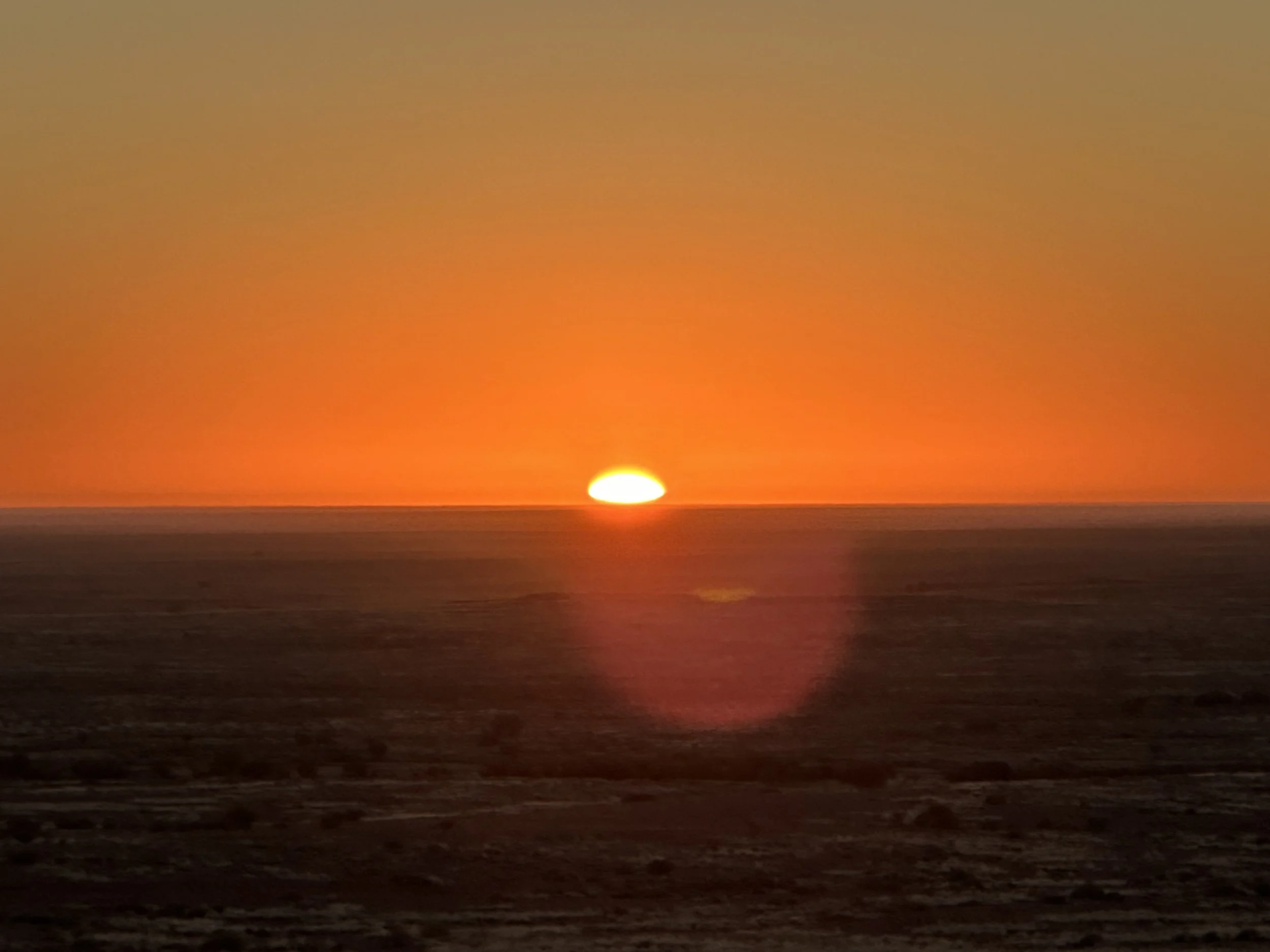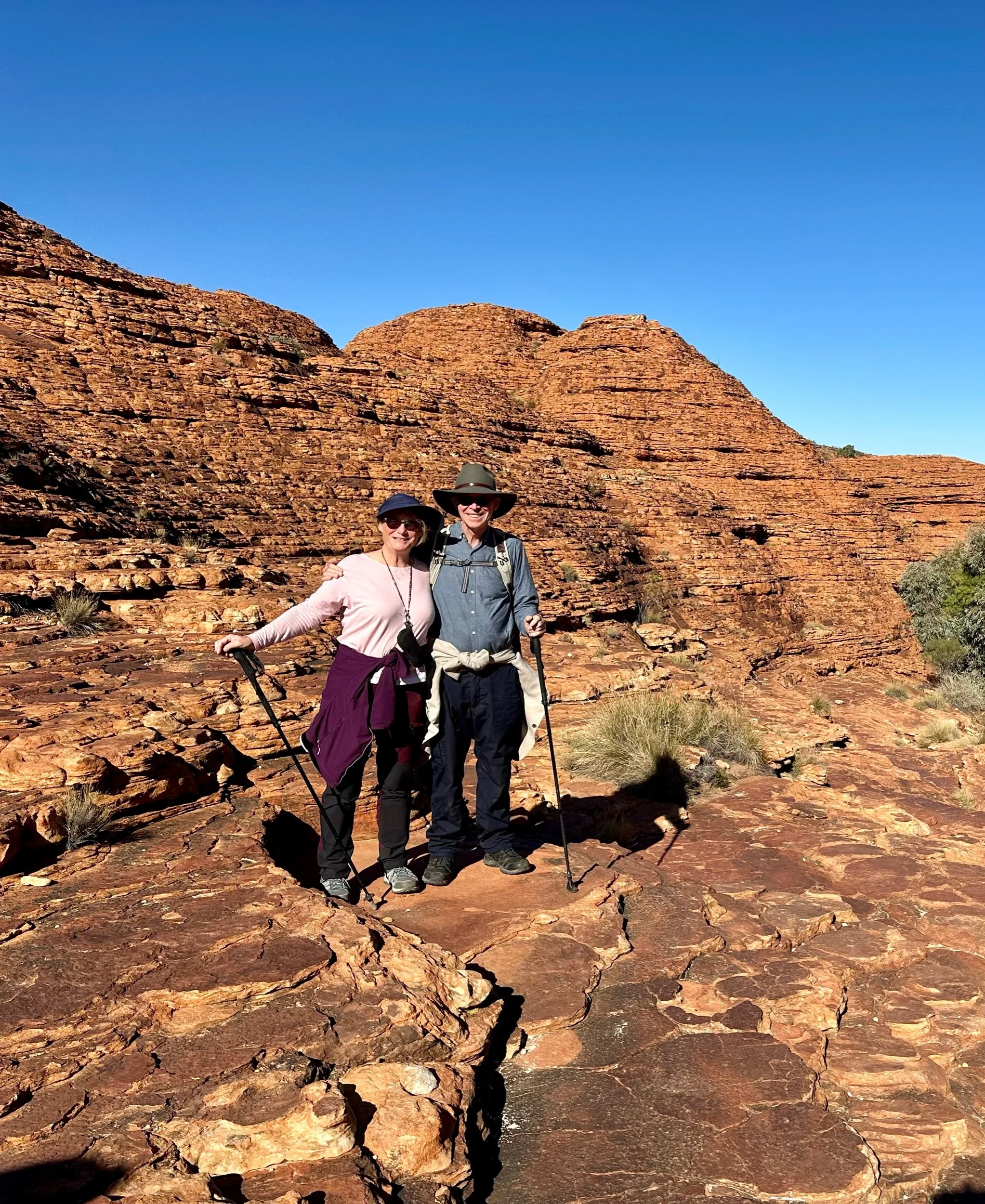Aus 11 - Coober Pedy
This is our second visit to Coober Pedy located inside the North of South Australia but still very much in the desert. The last time was 5 years ago when we came in to town, off the Oodnadatta trail. (This blog can be found elsewhere on this site). I felt that this town needed another look. 👀
The extraction of high quality Opal stones is what gives it its raison d’etre. Yes, dusty, scruffy looking Coober Pedy is still one of the world’s largest Opal suppliers. And whilst many mine workings have been abandoned, there are still large and small productive mines spreading out from town.
The approach road (Stuart Highway) is lined with large and small mounds of pale coloured desert soil, which are the tell tale signs that prospectors have been at it!
The sandy streets have small houses, many of which have large quantities of rusting mining equipment sitting out front. Anyone can come and register a claim and mine their own small parcel of land here.
With a population of around 3,500, Coober Pedy is big enough to support a decent Supermarket and a smattering of other shops and mechanics, plus umpteen Opal Outlets!
When we last visited it was quite hot, in April. I could not imagine that anyone chose to live in small houses in a hot small outback settlement surrounded by rusty cars, abandoned mine workings and oodles of indifferent looking scrubby sand.
This had to be a place that people came to find work, perhaps seek their fortune and to work hard in dusty mines in scorching temperatures. And indeed that is partly right. Opal mining has brought people in from many different parts of the globe.
Coober Pedy has many nationalities living side by side. We found a Serbian Church and a Croatian Social Club and our waitress in a cafe was French! It also claims that 30% of it’s population, are aboriginal and people living and working in Coober Pedy are indeed very mixed.
Delve deeper into Coober Pedy and we soon realised that many of the rocky outcrops in and around the town hid the entrances to homes and businesses carved into the rock - dugouts. Apparently most permanent inhabitants live under ground as a way of coping with the high summer temperatures. Being encased in thick stone, these homes maintain a temperature of 25 degrees both summer and winter. Some of these dugouts would have been in abandoned mine entrances, and are now accommodating homes with electricity, TV’s, washing machines, children and pets etc. All the trappings of modern life.
So do people choose to live here? Well the answers to that question surprised me.
Karen, now on her second career, was living in Melbourne and on retiring actually wanted to relocate to live here. She visited from Melbourne, found an estate agent and asked them to send her details only of underground properties. She eventually found one she liked and could afford with 5 bedrooms and ample living space for her and her many animals. She moved here a few years ago, following ill health retirement and she now rents out the elevated stony yard in front of her ‘cave-house’, to campers wanting to wake up to an amazing desert view. In the dark winter evenings, campers sociably sit around a log fire warming themselves in the dust.
Two of her 5 bedrooms have been turned into a self contained underground Air BnB. A swanky guest 4x4 sits outside her stony dugout door.
Her grey dreadlocks reach down to her waist, and she speaks of the sense of community here. People all look out for each other. Her girlfriend has joined her here and Coober Pedy works for them. She is here to stay.
Another woman I spoke to, working in a busy Shell Garage, also chose to move here after she gave up her family farm following the death of her husband. She described previously home schooling her children on their remote farm and how during years of drought the whole family would herd their cows between watering holes and live out in the desert with the animals to keep them clustered around water. She homeschooled in this environment and all her children have grown up and are now self sufficient.
When her husband died she chose to relocate to Coober Pedy because she was used to the rural life, wanted a bit more company and she too loves it here and has found a strong sense of community. She once lived in Brisbane with lots of traffic, roads, people, cars, buses and trains. She would not go back because the people are different. They don’t care about their neighbours.
She has hung onto 50 acres of cow land which is farmed by one of her sons. She does not live in a dugout and has air conditioning and solar panels! Having sold the farm, Coober Pedy works for her.
Yes, many people here opt to live underground where the solid rock keeps their rooms cool in summer and in the winter provides insulation from the bitter cold nights.
Vehicles travelling down from Darwin to Adelaide on the Stuart Highway all pass through Coober Pedy. It has a few Fuel Stations, campsites and other visitor accommodation. And like many small towns in Australia, Coober Pedy has done well at exploiting its assets. Underground living has become a thing here which attracts visitors. Coober Pedy has made it worthwhile stopping over.
There are several underground tours into old mine workings and the small number of modern hotels are full of visitors wandering around underground Opal stores! At night, to eat out you would need to book a table. Happy Hour finishes at 5.30pm in the bars.
There are hotels with underground rooms, and even rooms which are not underground are decorated in underground style!
There are three churches underground, some underground Air BnB accommodation and an underground cocktail bar.
Obviously some of these buildings don’t amount to much when viewed externally but Coober Pedy has made a virtue out of necessity in a place where summer temperatures can peak at 50 degrees.
Many homes, including Karen’s look directly out of town onto a bleak bare flat windswept dessert landscape which gives rise to amazing sunrises and sunsets. Needless to say we are with Karen!
Kanku Breakaway Conservation Park
From Coober Pedy, we visited this Aboriginal owned heritage site of Kanku Breakaways. It is a National Park. It gave us a chance to stretch our legs and get me away from browsing Opel Jewelry which I probably would not wear.
To reach the carpark and Lookout, we had to drive along a dusty dessert road and from there we had amazing views over an unexpected landscape.
We learned that this was the location for a number of blockbuster films including Mad Max and Ground Zero. For me it is a chance to drop in a lot of photos!
The image below is of the Dingo Fence which passes through Breakaways. This fence is designed to keep wild Dingos away from sheep. It is apparently the longest fence in the world at 2m high and some 5,300 kilometers long and across three States!
On our last evening in Coober Pedy, we sat in a fake underground bar and met two well travelled Australians visiting Coober Pedy before going up to Uluru. They were off to the Rockies for Xmas and then down to Mexico to complete their tour. They were curious about Coober Pedy and said Tom gave a fantastic talk about the workings of his mine. The children were given torches to look for opals and were allowed to go up and down in his creaky one man lift in his mine shaft. They said it was just magic.
https://www.flickr.com/photos/129023979@N05/36138439144





